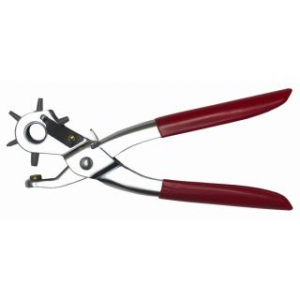Self adhesive stick on felt buttons for chair legs are a good substitute & for a couple of dollars ...well worth getting a small pack from a DIY ironmongery area . Slice them down to the correct thickness with a box cutter .
I've had success making a whole range of plugs & washers in felt , leather , plastic & rubber strips making on my lathe .
Getting them shaped in rounds is easy , if you turn up a cup to the desired diameter an inch deep in an inch of round bar turn the major diameter down give it a 1/ 4 shank & put a cutting edge on it using a fine hand file . Now use a vice to squeeze the " punch " on to the felt whilst you have a soft wood backing strip behind the felt . Once it is pushed through take it out the vice . T turn it in the lathe & using a fine file take off any straggly edges . Then part the tube of the punch about 1/16 further back than the felt will be down the tube .. Now press the felt out the thin ring with the blunt end of an appropriately sized twist drill or turn up a small mandrel for it .
Another way is to make the punch up as before put it in a dead tail stock chuck
Put a block / rod of close grained wood cut at 90 % , grain along the bed in the chuck & stick the pad of felt on the block . Start the lathe at a slow speed & advance the punch onto the felt it will soon cut out a plug , if you are careful you can usually take the tailstock back leaving the plug still attached to the bit of felt . Cut a square of the felt off the button so it contains the partly cut through plug . & then slice the square bit containing the round plug to the desired thickness .
The last set of plugs I made was from 1/4" thick unvulcanized rubber
I bored the plug diameter right through a 1.5 inch length of stainless 19 mm steel rod . turned 1/3 of its length to 1.5 mm bigger than the plug hole I'd drilled out & again gave it a cutting edge with a fine file . Then gingerly used the angle grinder to take out a fraction of just over half the thin body diameter so as to make an ejection slot for the rubber plugs I was cutting . I then proceeded to put the punch in the tail stock chuck , stapled the rubber sheet strip on a 2x2 " block of wood in the 4 jaw & as then above took the tailstock feed on the the rubber . It worked well especially after I'd spent a little more time cleaning up the burs from where I'd used the grinder ....to give a really smooth surface & I'd given the tube inside & out surfaces the slightest smear of silicon grease to help lube the rubber& punch .
Cutting the bed wipers was a doddle , after washing one out in a tiny metal cap full of electronic circuit board spirit based cleaner / de-greaser & letting it dry of a few days I drew round one as it was pressed down on top of a 3x3 self adhesive label
I then stuck the label on a strip of 5 mm aluminium which I'd drilled & screwed to the end of some 2x 2 " batten with 2 x 20 mm x N o6 counter sunk screws wood , & cut it to a smidgeon ovesize size with a thin bladed angle grinder .
The next step was to put a sticky felt pad on some smooth planed board . put the aluminium mask on it , added a faced up 12 mm x 50 mm long steel bolt the top , then used a big " G clamp " to set it all tight to the steel bench top & used a new blade in the box cutter to carefully cut the new felts to the aluminium mask



